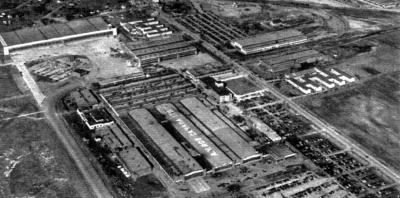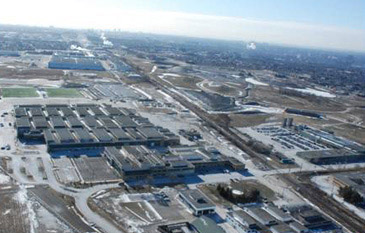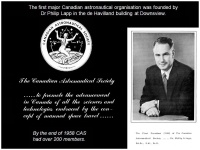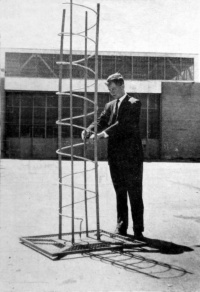The Empire Strikes Out - Canada's Defence & The Commonwealth Space Program by Robert Godwin
From The Space Library
Abstract
The general confusion during the late 1950s about the merits of missile defence led to several questionable strategic decisions made by the Governments of Canada and the United Kingdom. The possibility of a third contestant in the Space Race, in the form of a Commonwealth space program hinged on the sharing of technology and financing amongst the various invested nations, but more significantly on the political choices made regarding the future defensive postures of Canada, the United States and the United Kingdom.
When Geoffrey De Havilland committed to building an aircraft factory in Canada in 1927 Britain was still a global power, despite the immense losses and repercussions of World War I. Canada was independent but continued to be perceived by many, both at home and abroad, as part of the British Empire. During World War II Canada provided Britain with a disproportionate amount of military hardware, particularly aircraft such as the Avro Lancaster bomber and the De Havilland Mosquito fighter. A vigorous exchange of engineering skills and personnel took place between the two countries, before, during and after the war.
Between the 1920s and 1950s vast sums of money were spent building Canada into a competitive world-class center of aerospace science and engineering. In the late 1940s and early 1950s much of Britain’s industrial energies were tied up rebuilding the country’s infrastructure after the Second World War. The birth of the long-range strategic missile during that conflict and the subsequent Cold War had raised the stakes until Britain no longer had the resources to project itself onto the world stage with the same big-stick as the Soviet Union and the United States. Many British engineers and scientists chose to emigrate to Canada and Australia in search of better opportunities.
In 1954 Canada's first rocket scientist Kurt Stehling, speaking at the International Astronautical Congress in Innsbruck, broke down the various factions needed to create a space program in the United States. He isolated six groups: the German scientists brought over after World War II; the existing aircraft industry designers and engineers; the young engineers just getting started with rocketry; the students still in college and university; and finally the taxpayer. In Stehling's mind each group brought different strengths and weaknesses. The Germans were ebullient and experienced but were finding it hard to adapt to "democratic processes". The aircraft industry was saturated with talent but bogged down by bureaucracy and slow to adapt to rockets. The young engineers were enthusiastic but tended to overlook the technical difficulties due to lack of experience. The students were idealistic but inexperienced and again impatient. Finally the taxpayer had the money but they had to be persuaded to part with it in a way that was to their benefit.1
When looking at Stehling's summary you can see that all of these things were the same in England and Canada with the notable exception of the first group. Wernher von Braun seems to have agreed with Stehling and quickly realized that he needed to engage all of these other groups. He could do that from a unique position of experience, adaptability, management skills and charm. There was no equivalent to the Germans in Canada or England and so right from the outset, the United States had a huge head start. The top of Stehling's ladder in Canada was occupied by the entrenched aircraft establishment, recently fortified by a massive influx of money from the war. But the industry group, the Canadian Aeronautical Institute based in Ottawa, took months to decide if it was worth creating an Astronautical division, before finally getting around to it in October of 1958. Even then they found it difficult to recruit members.2
In the summer of 1958, the UK parent of A.V. Roe Canada, Hawker Siddeley was publicly trumpeting its Canadian success story. British reporters were literally catching flights to Canada just to interview the daily flood of emigrant engineers. Employees at "Avro" and its branch subsidiaries had escalated from 300 in 1945 to 41,000 in 1958; during the same period sales at Avro rose from zero to $310M.3

| 
|
| A.V. Roe Canada in the 1950s | The Old De Havilland Factories in Downsview Ontario as seen in the 2000s |
The rival De Havilland Company, also headquartered in England, had a net asset reserve of just over £19M (£400M in 2015) and its Beaver aircraft continued to be churned out of their factory at Downsview in Toronto. The Beaver had performed so well during the International Geophysical Year (56-57) that no less than three different geographical features had been named after it in Antarctica, and the US Congress had actually passed a special dispensation to allow it to be sold to the US military.4
Immediately following the flight of Sputnik in October 1957 an earnest group of Canadian engineers at the De Havilland Missile Division in Downsview, Ontario, led by Dr Philip A. Lapp, dreamed of a future where Canada would contribute to a space program; one that would be owned and operated by the members of the Commonwealth. To that end Lapp’s Canadian Astronautical Society (CAS) dispatched their group secretary Arthur Maine to the International Astronautical Congress (IAC) in Amsterdam in August 1958. At this conference the CAS officially became a member of the International Astronautical Federation, but the main reason for Maine attending was to meet with representatives from England and Australia to deliver the society's support for launching a third contestant in the space race.
The Canadian Astronautical Society seal, slogan and founder, October 1958
Maine met with members of the De Havilland team, based out of Hatfield England, who for almost four years, under the guidance of Chief Project Engineer Geoffrey Pardoe, had been developing an all-British long range ballistic missile. It was named Blue Streak and it was designed to replace the American Thor nuclear missiles that were currently defending England, but were under American military authority.
Blue Streak was the centerpiece of Britain’s future defence program and was designed to carry a hydrogen bomb up to 2500 miles. Test stands had been built by De Havilland in two locations in England and a complete launch facility was under construction in Woomera, Australia. Despite generous technology transfers from the United States (the airframe was modified from the Convair Atlas missile and the engines were modified by Rolls-Royce from a Rocketdyne design)5 the costs of the program were escalating and some grumbling had already been heard in Westminster; so not surprisingly the Canadian delegation was met with some enthusiasm by the British and Australian scientists. Canada might offer not only financial support, but also engineering talent and possibly locations for tracking stations. The meeting concluded with the formation of the Commonwealth Astronautical Committee and plans were made to host a Commonwealth Space Symposium at IAC the following year in London.
After Maine returned to Toronto the Canadian Astronautical Society quickly proved their credentials when just two months later they built a tracking station with donated money at Downsview and used it to follow the recently launched Pioneer satellite. The CAS satellite tracking station was almost certainly the first to be operated in Canada.
The CAS Helical satellite tracking antenna
That same month an invitation was sent out by Cornell University in New York for submissions for foreign satellite experiments to fly on American rockets. Representatives from the Defence Research Telecommunications Establishment (DRTE) in Ottawa were sent to attend the meeting. Initially DRTE proposed tacking some Canadian instruments onto a US satellite.6
The Empire Strikes Out - Canada's Defence & The Commonwealth Space Program - Part 2 by Robert Godwin
Footnotes
1The Men Behind the Rockets – Heinz Gartmann 1956
2Canadian Aeronautical Journal – Sept 1959
3Daily Express Oct 30 1958
4De Havilland Gazette June 1959
5RAF Flying Review Oct 1959
6Canadian Aeronautical Journal March 1960


